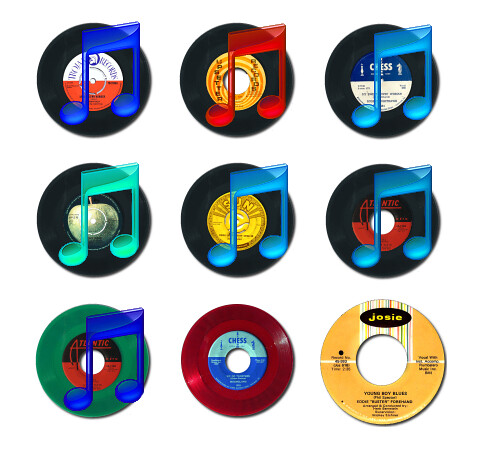Some more thoughts on design in the tech industries. This time, the slow death of what I think of as the ‘gadget aesthetic’. The gadget aesthetic was a product of the novelty and glamour of electronics; it fetishizes the look of hi-tech gizmos. Lots of buttons, lots of LEDs, curvy moulded plastic, metallic-looking silver plastic:

This is the same approach as the set-designers for Star Trek: if you’re going to have some actor peering at a panel and saying “Captain! The dilithium crystal containment field is coming out of phase!”, then you really need the panel to look important. So you cover it in glowing panels and screens and buttons.
But now I think people have got past that; they want their consumer electronics to look stylish, but not necessarily in the Star Trek manner. One of the reasons Jonathan Ive has won all those awards for Apple is that he completely understands that. I’m writing this on an iMac which has less buttons visible than just about any other electrial product in the room – the clock/radio, the camera, even the fan. It is less visibly complex than the Anglepoise next to it.
Apple only have about 5% of the personal computer market, so perhaps you can’t look at their computers and assume that the design taps into a profound cultural shift. But they do have an overwhelming market share in mp3 players, and the iPod has that same post-gadget aesthetic. It’s not that it’s somehow trying to look anti-technology, but it isn’t trying to look ‘hi-tech’. It’s not trying to look like it fell through a wormhole from 2037. It has no LEDs or glowing buttons; the controls it does have are reduced to a circle of a slightly different colour on the front of the machine.

None of this is exactly rocket-science, and there have been thousands of words written about Apple’s cool minimalism. But on the specific point of a post-gadget aesthetic, Apple’s competitors either don’t get it, don’t know how to do it, or aren’t trying.
Here’s an iPod competitor, the 20GB Creative mp3 player:

I’m sure it does a good job of playing music. Ad someone has put some thought into making it look attractive. But look at the styling. The glowing buttons, the glowing outline, the moulded plastic, and the futuristic typeface on ‘Creative’ — it looks like a communicator from Star Trek.
And here’s the ‘iriver H320 Lite 20GB MP3 Player’, which is, i anything, even more mired in the same culture of making products look futuristic:

You’ve got shiny glowing buttons, another futuristic typeface, the use of techy jargon (‘multi-codec jukebox’). It’s quite a cool thing and I’m sure a lot of people will look at it and want it, but it’s cool in a gadgety way. Next to the iPod it looks like it’s trying too hard.
One more example. Compare the silvery, swooshy Microsoft Wireless Laser Mouse 6000 to Apple’s plain white wireless Mighty Mouse. They have nearly the same functionality (both have four-way scrolling; the Mighty Mouse has four buttons to the MSLM6000’s five), but the Mighty Mouse doesn’t feel the need to advertise how sophisticated it is.
At the moment all this stuff is so closely associated with Apple that it’s just perceived as Apple branding. In fact, the Nintendo DS Lite, which has a very similar kind of simple, ungadgety style, is often described as looking like it was designed by Apple.

But my feeling is that these companies are just ahead of the curve. There will probably always be a market for techy geek chic, for games consoles, computers and mobile phones decorated with das blinkenlichten. But electronic hardware is not the sole preserve of geeks anymore, and I think tech companies are slowly starting to understand that. Apple has always been the less geeky alternative to Microsoft, and Nintendo have always been more family-oriented and less focussed on hardcore gamers than their competitors. And generally speaking, both of them have been outcompeted, and have had rather poor market share.
But the runaway dominance of the iPod, and the fact that the DS is outselling the more powerful but more traditionally gamer-orientated PSP, raise the possibility that the non-geek dollar is finally starting to have a serious impact. I think we’re in an interesting time when a lot of companies know that they need to make their products more desirable to a broader range of customers, but there’s a lot of groping around to work out how to do it. The mobile phone companies have had to deal with this quicker than anyone, and they haven’t done a bad job; from the time that mobile phone use exploded, it probably only took them about five years to come up with a proper girly phone, for example. And there is a huge range of designs available, even if they often tend to be somewhat similar in overall look. So if the much-rumoured iPhone does ever materialise, it’ll be interesting to see what Ive and Apple can do when competing in an already well-developed market where the importance of design is understood. I’m sure there’s scope for a much better UI, for a start, but what really interests me is whether he can come up with a look for the phone which stands out from the crowd. If he does I’m sure it’ll be the least futuristic looking mobile on the market.










